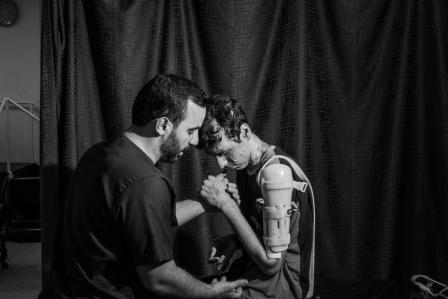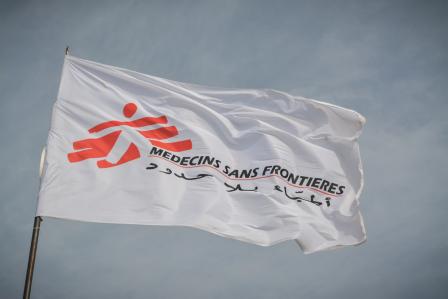Gaza: No safe place as people are being crushed by intense, continuous bombing
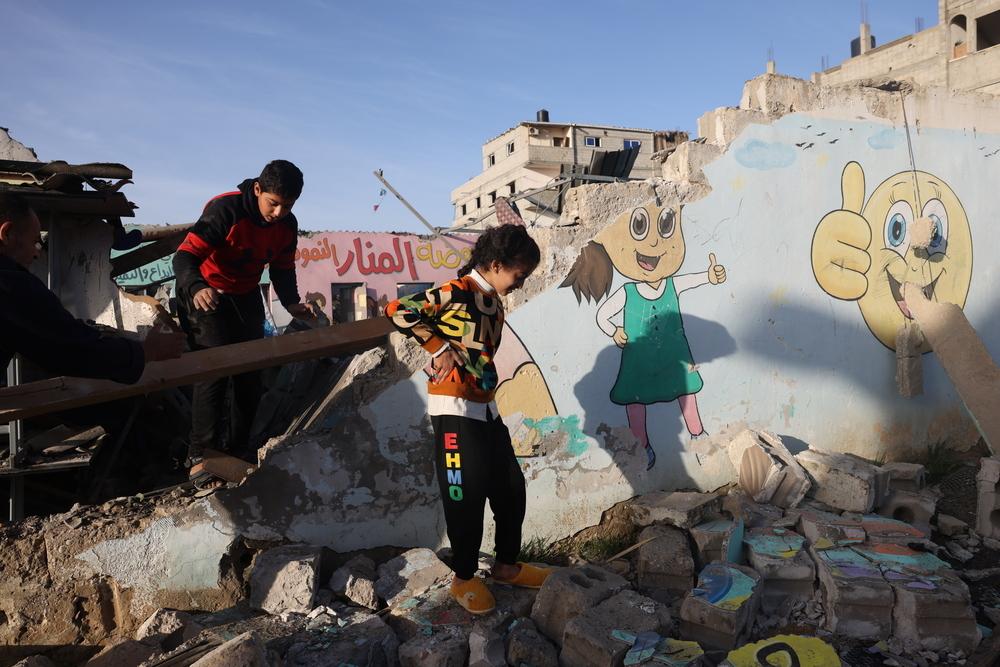
Children walk through the rubble of a destroyed building after it was hit in an Israeli airstrike. Gaza, 24 November 2023. Palestinian Territories, 2023. © Mohammed ABED
Two months into the war, Israel’s unrelenting, indiscriminate strikes on Gaza have turned the north of the Strip into a pile of rubble and are now pounding the Middle Area and the south with increasing brutality. The suffering of Palestinians trapped in Gaza can no longer be put into words.
With nearly the entire 2.2 million people of Gaza being now cornered in the south of the Strip, the Israeli forces' strikes on what was supposed to be a safe zone prove that nowhere is safe. Nearly 19,000 people have been killed and over 50,000 have been injured over the past ten weeks in Gaza according to the Ministry of Health and the ongoing offensive continues to create hundreds, if not thousands, of new casualties each day.
Challenges of treating war wounded in Gaza
In Nasser hospital in Khan Younis, in the south of Gaza, where Doctors Without Borders / Médecins Sans Frontières (MSF) works, the dead and wounded have been arriving en masse almost every day since the end of the short-lived truce on 1 December. The severity of their injuries and the sheer number of patients are pushing Gaza’s healthcare system to a breaking point even in this part of the Strip, after its collapse in the north, where according to the WHO only one hospital is still partly functioning.
“The emergency department at Nasser hospital is completely full and new patients are being treated on the floor. Doctors are stepping over bodies of dead children to treat other children who will die anyway”, says Chris Hook, medical team leader with Doctors Without Borders in Gaza. “More and more temporary structures are being erected, tents are used as wards and temporary clinics. Every spare building is being filled with beds for patients. More hospital beds are desperately needed.”
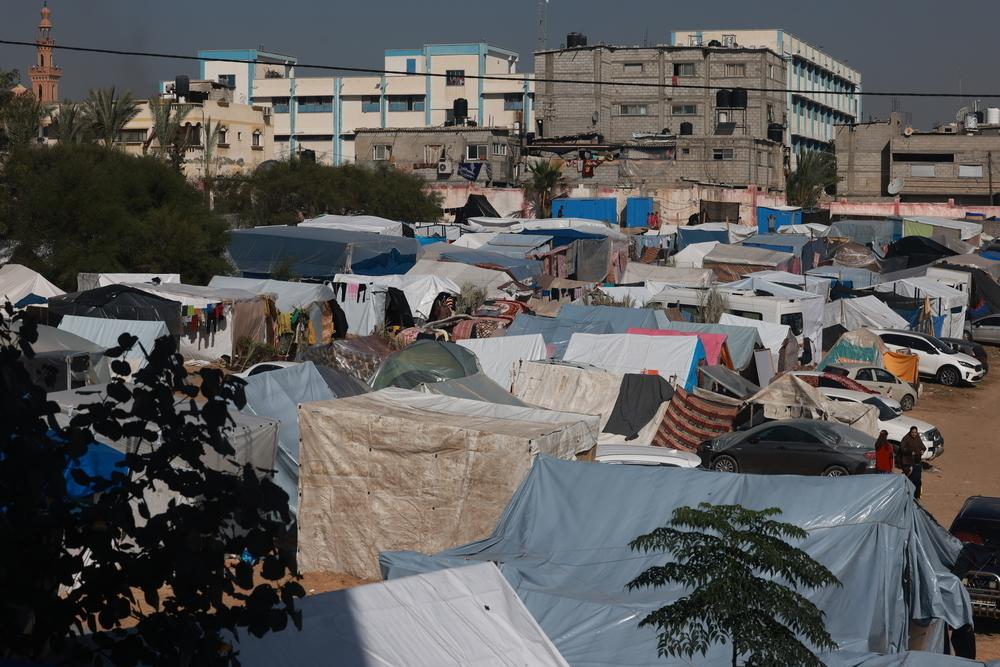
Hundreds of people camp in temporary shelters in the south of Gaza. Palestinian Territories, November 2023. © Mohammed ABED
Treating the war wounded is complicated as blasts from explosive weapons and collapsing buildings create multiple, simultaneous injuries on many parts of the body. In Gaza, Israel’s complete siege makes it impossible to access essential drugs, including pain management drugs which are critical in surgical interventions, and the medical tools needed to repair shattered and burned bodies.
“The lucky few that survive, have life-changing injuries. Many injured people suffer from extreme burns, major fractures that won’t heal properly and may go on to require amputations”, says Hook.
Many of these patients, even if they can get back to something resembling normal life, will have severe chronic pain that will require substantial pain management as well. It would be a huge burden even on the most functional healthcare system, let alone for a system under intense pressure, like in Gaza.Chris Hook, medical team leader
In Al Aqsa hospital, in Gaza’s middle area, an Doctors Without Borders team have been providing emergency surgery and outpatient care. From 1-11 December, approximately one in three patients (640 over 2,058) have been announced dead on arrival. On 6 December, the number of people killed arriving at Al-Aqsa hospital surpassed the number of injured.
The hospital staff strive to maintain effective hygiene protocols and lower the risk of infection for patients while facing a lack of essential supplies and equipment – this is a remarkably difficult task, yet a critical one, as a soaring number of infections can quickly turn into an additional medical challenge for both the patients and the overwhelmed health workers.
A scorched-earth policy that leaves no safe space for people, constant attacks and repeated evacuation orders given by the Israeli forces to entire neighbourhoods, and the total siege imposed on the Strip have made it extremely hard for people to access healthcare, and for medical staff to provide it. From 1 December, Doctors Without Borders had to suspend its support to three health clinics in the south and reduce its presence in Nasser hospital. An end to the continuing displacement of people is imperative to allow the sick and the wounded to receive the care they urgently need.
Infections peak as the healthcare system reaches breaking point
While the risk of violent attacks for civilians in Gaza persists, infections resulting from poorly treated wounds are rising fast, putting lives at risk.
“The risks of infection are incredibly high because of the conditions that people have to live in and the fact that there just isn’t the ability to provide the long-term in-hospital care that these patients truly need”, says Hook.
In the European hospital, a small medical team from Doctors Without Borders, recently started treating patients who were injured at the beginning of the war and whose wounds have now become infected due to the lack of medical care.
There are only a few primary health care facilities, including Al-Shaboura clinic supported by Doctors Without Borders – currently open in the south, meaning that there is little treatment available for infectious diseases like respiratory infections, diarrhea, chicken pox, lice and scabies, which spread uncontrollably in overcrowded shelters, adding to the risks for displaced Palestinians.
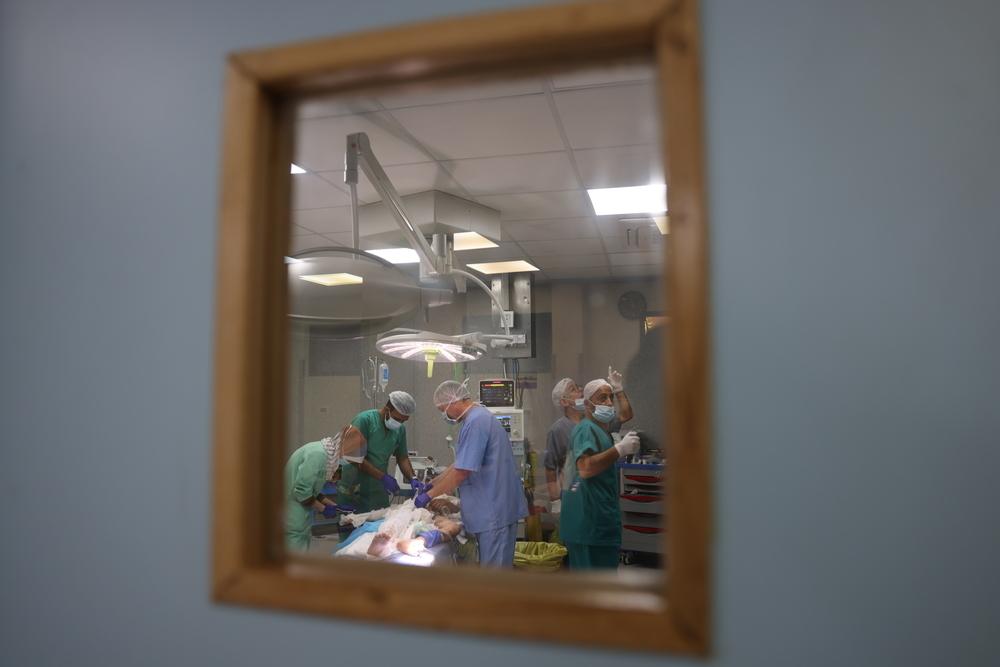
Surgeons perform surgery in operation teather at Nasser hospital. Palestinian Territories, November 2023. © Mohammed ABED
Appalling living conditions and widespread hunger
Shelter for displaced people is another pressing need of its own, as newly displaced add to the already high numbers of people living in desperate conditions. “As you go through the streets south of Khan Younis and near Rafah, you see the temporary shelters expanding further and further as more and more people arrive. The general conditions for most of these people are appalling: they live in temporary structures made of a few pieces of wood banged together and covered in plastic sheeting, without insulation from the earth or the concrete ground. They struggle to find enough water to meet their hygiene needs.” The flimsy shelters are now constantly struggling, battered by the strong winds and heavy rain.
With more people arriving in the south, food is becoming harder to find and the little food that is available is too expensive for people to buy.
During a seven-day truce in November, Nasser hospital had a brief respite from receiving patients with violent injuries and was instead overwhelmed with diabetic and other chronic patients who were not able to access the medical care they needed during the fighting. This would change again when hostilities resumed on 1 December. This time with even greater intensity. We don’t know what has become of those chronic patients once the facilities were overwhelmed by mass arrivals of war-wounded, nor how they will be able to survive.
On 17 December, the maternity ward of Nasser hospital came under fire. One patient was killed, while the others were wounded in this attack. Attacks on healthcare must stop now.
Will you support our emergency response work?
Help us provide lifesaving medical care during emergencies by making a donation today.






